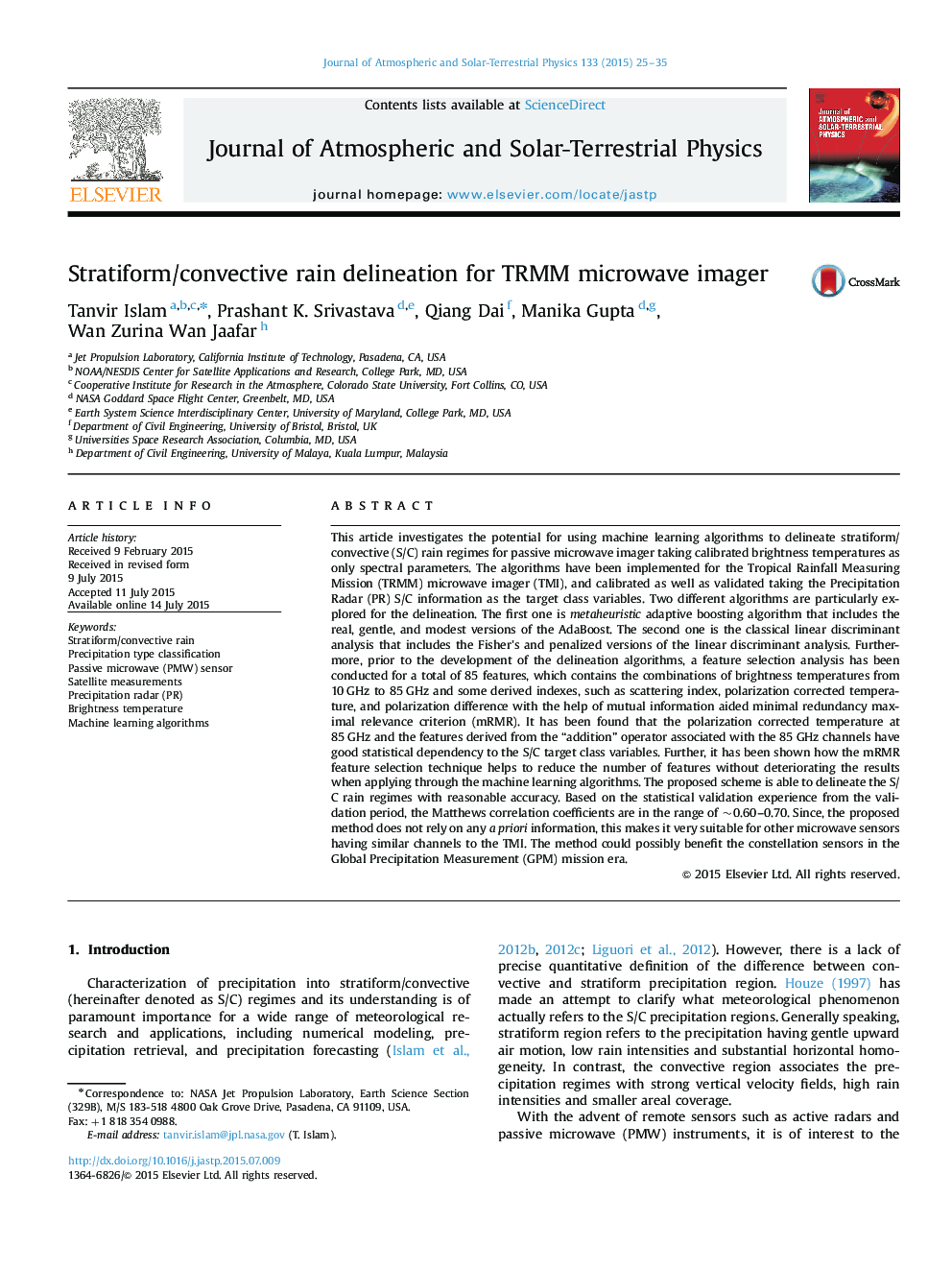| کد مقاله | کد نشریه | سال انتشار | مقاله انگلیسی | نسخه تمام متن |
|---|---|---|---|---|
| 1776396 | 1523611 | 2015 | 11 صفحه PDF | دانلود رایگان |

• Startiform/convective rain delineation algorithms are proposed for TMI.
• The algorithms are based on machine learning techniques (AdaBoost & LDA).
• The algorithms can delineate the S/C regimes with reasonable accuracy.
This article investigates the potential for using machine learning algorithms to delineate stratiform/convective (S/C) rain regimes for passive microwave imager taking calibrated brightness temperatures as only spectral parameters. The algorithms have been implemented for the Tropical Rainfall Measuring Mission (TRMM) microwave imager (TMI), and calibrated as well as validated taking the Precipitation Radar (PR) S/C information as the target class variables. Two different algorithms are particularly explored for the delineation. The first one is metaheuristic adaptive boosting algorithm that includes the real, gentle, and modest versions of the AdaBoost. The second one is the classical linear discriminant analysis that includes the Fisher's and penalized versions of the linear discriminant analysis. Furthermore, prior to the development of the delineation algorithms, a feature selection analysis has been conducted for a total of 85 features, which contains the combinations of brightness temperatures from 10 GHz to 85 GHz and some derived indexes, such as scattering index, polarization corrected temperature, and polarization difference with the help of mutual information aided minimal redundancy maximal relevance criterion (mRMR). It has been found that the polarization corrected temperature at 85 GHz and the features derived from the “addition” operator associated with the 85 GHz channels have good statistical dependency to the S/C target class variables. Further, it has been shown how the mRMR feature selection technique helps to reduce the number of features without deteriorating the results when applying through the machine learning algorithms. The proposed scheme is able to delineate the S/C rain regimes with reasonable accuracy. Based on the statistical validation experience from the validation period, the Matthews correlation coefficients are in the range of ~0.60–0.70. Since, the proposed method does not rely on any a priori information, this makes it very suitable for other microwave sensors having similar channels to the TMI. The method could possibly benefit the constellation sensors in the Global Precipitation Measurement (GPM) mission era.
Journal: Journal of Atmospheric and Solar-Terrestrial Physics - Volume 133, October 2015, Pages 25–35